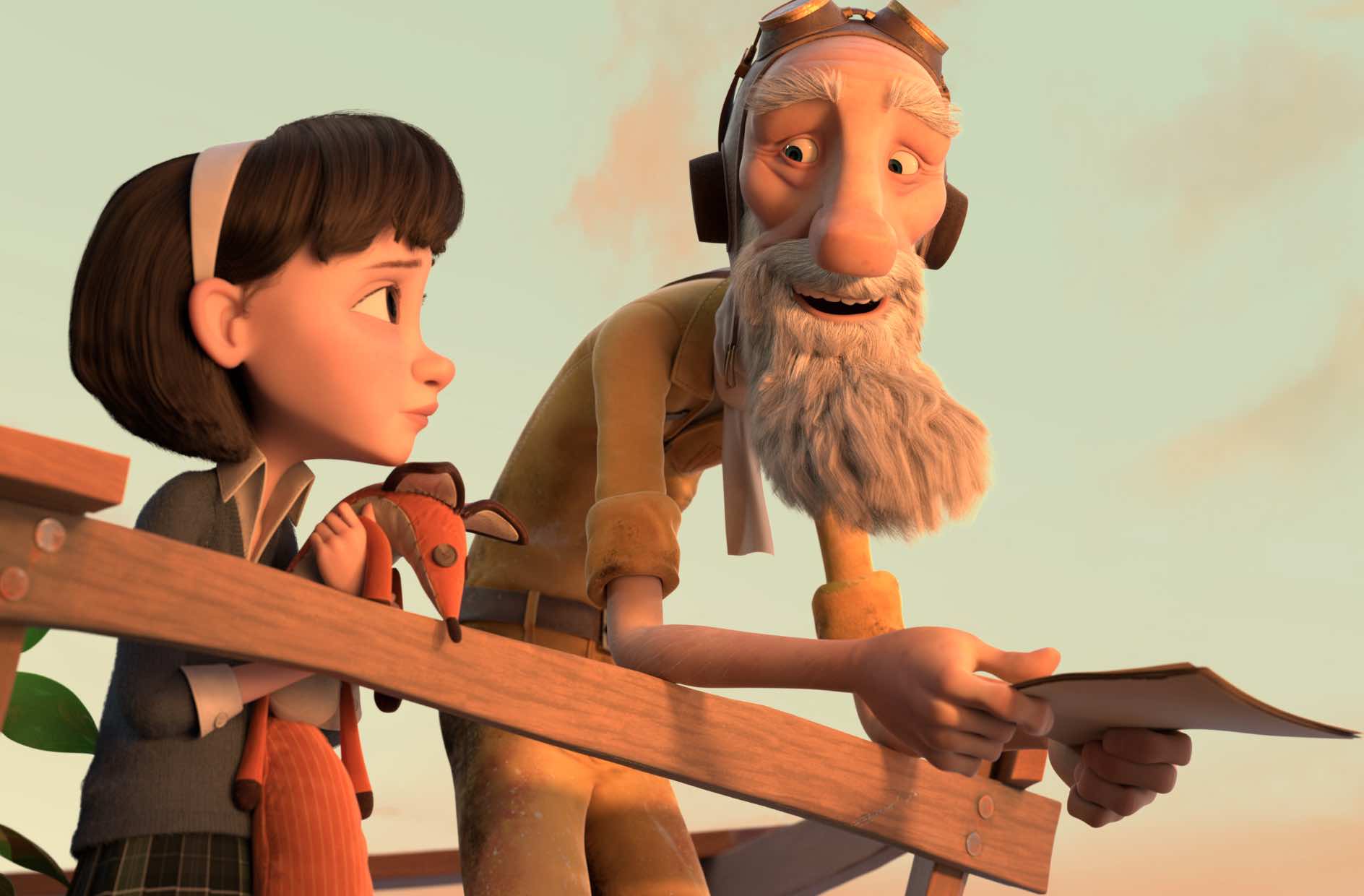Movie review: The Little Prince
An uneven effort with plenty of good intentions, Mark Osborne’s adaptation of Antoine de Saint-Exupéry’s kid-lit classic gains a new dimension but loses some depth
The Little Prince
3.5/5
Starring: James Franco, Rachel McAdams, Jeff Bridges, Marion Cotillard, Benicio Del Toro, Paul Giamatti, Ricky Gervais
Directed by: Mark Osborne
Running time: 108 minutes
MPAA Rating: Parental Guidance
By Katherine Monk
It won’t destroy your precious memories of Antoine de Saint-Exupéry’s classic, but you may feel a frisson of betrayal in the final moments that forces you to scan the bookcase back home for the original. Just to look at the pictures, and recapture that alien feeling.
In a world populated by orphans, magic and talking animals, The Little Prince is still one of the strangest pieces of kid-lit out there. A little boy lives on a tiny asteroid by himself, has a rose, and somehow ends up on Earth, in a desert, where he meets an aviator and asks him to draw a sheep.
As a kid, I didn’t really understand the story, but I understood the feeling of profound loneliness, the existential angst of living on a tiny rock, and being unable to communicate with the grown-up world in a successful way.
There was melancholy in the pen and ink drawings of a little boy with yellow hair, green clothes and two empty circles for eyes. But there was also magic.
Director Mark Osborne clearly understood the material he was tackling, but coming from the likes of Kung Fu Panda, he never had to rely on subtle strokes, and that’s what this well-intentioned adaptation is missing.

A whole new generation: The digitally rendered Little Girl and The Aviator
Facing the same dilemma as the director of the Peanuts Movie, Steve Martino, Osborne had to take iconic two-dimensional characters and update them for the 3D world of digital animation without betraying their hand-drawn feel.
To accomplish this precarious task, he creates something that looks like stop-motion with paper puppets, bringing the classic illustrations to life with the help of computers. These sections are stunning because they capture the daydream tone of the narrative as well as the analog feel, giving grown-ups just the right poke in the solar plexus to conjure their inner child.
It’s the rest of the film that presents a challenge, to the viewer and to Osborne, because we get a whole new storyline.
Set in the current day, we meet a little girl (Mackenzie Foy) and her single mother (Rachel McAdams). There is love in their little world, but also a lot of pressure: Mom has the kid on a relentless study schedule so she can get into the best school in town. She even moves neighborhoods in order make the ambition become a reality.
They end up in a Mies van der Rohe-styled cube village, where everyone exits a home box and travels to a work box, a routine repeated daily and accentuated by an overhead view of a grid that resembles a circuit board more than a place for humans.
The only house that looks remotely lived-in belongs to an eccentric old man, the Aviator, a living anachronism with a backyard full of junk, and a voice that sounds warmly familiar.
Jeff Bridges brings both an avuncular and oddball quality to the mike, and while the wise old coot may be a bit of a cliché, he’s the necessary transition point between the new digital world and the one of old renderings.
The Aviator tells the little girl about his encounter with a strange little prince, presenting her with the pages of a journal written in French and illustrated with little drawings. Every page she reads brings the story of the Little Prince to life in the film, which means we go back and forth between the world of paper, and that of pixels.
The current day story feels a little thin and standardized to really meet the surreal level of the book, but it’s not supposed to. It’s there to serve as a dull contrast to the fantasy, and also to give 21st century kids a door into the mystery, a hand to hold as they stray into the non-linear world of true imagination – where one sees with the heart, because “it is only with the heart that one can see rightly; what is essential is invisible to the eye.”
This quote, uttered by the fox (James Franco), is the whole point of the story. And while we see iterations of the above quote several times over in this film, Osborne’s Little Prince never seems to hit the nugget of what it really means.
It’s about surrendering to love and imagination, all the things the eye cannot see, in order to find your own little home in the world. It’s why the Prince allows himself to be bitten by the poisonous snake, and leave his shell behind: so he can go home to his rose (Marion Cotillard) back on asteroid B-612.
Osborne gets most of it right, but in the last few scenes, he commits the ultimate act of character treason. And he does it to ease the existential sting.
Whether it was a gesture of kindness or a happy-ending mandate from the producers doesn’t matter. He should have resisted because without the pang of loss, the story loses its emotional gravity – the only force holding it together.
Osborne’s modern story ensures we can follow the plot on his imposed grid, but by the time the end credits roll, the exercise feels more like the mechanics of formula than a magical salve to soothe the lonely soul.
@katherinemonk
THE EX-PRESS, March 11, 2016
-30-






No Replies to "The Little Prince gets a little lost"